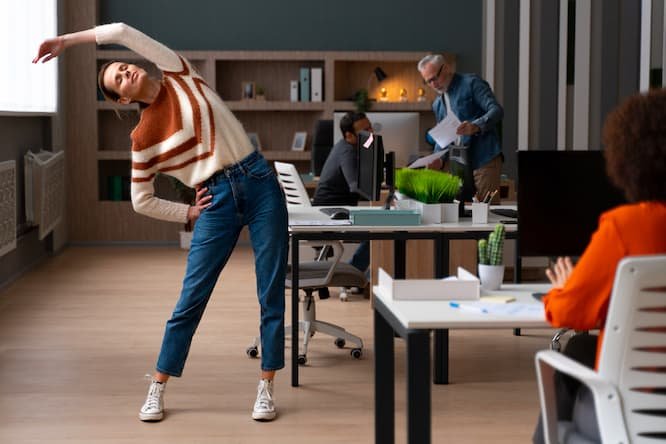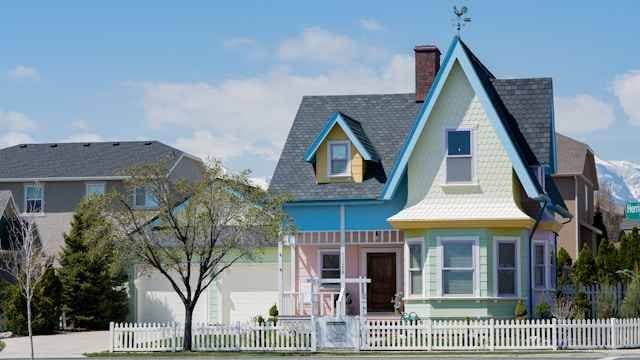Have you ever noticed how a well-organised environment gives you a sense of calmness and sincerity, whereas a chaotic space just passes that chaos to your head? Yes, there’s a role of dedication and willpower to put in efforts, but the design of the workspace comes as a significant element here.
This is something beyond aesthetics. The way any workspace is designed directly influences stress levels, focus, mood, and overall energy of its workforce. Having an office that your employees look forward to coming to daily is something every visionary business would want.
There are expert office interior designers in Pune revamping the office spaces to counterbalance the hassle employees face while commuting in the city. The aim is to create a space that cares about its people and their well-being, reducing burnout and encouraging creativity.
Why Stress-Reducing Offices Are in Demand
Today’s workforce must deal with a lot of things, apart from deadlines. Long commutes, hybrid schedules, and a culture of constant connectivity often blur the boundaries between work and life.
With the transition in work culture, now the millennials and Gen Z would prefer an office space that they feel good being a part of. A space where employees are not just working like robots, but also taking a break with some light games or communicating with their colleagues in a brainstorming session is prioritised.
A workspace that is flexible enough for its workforce to enjoy while working, and calm enough for its people to have a smile the moment they enter the space, goes far beyond businesses following a certain trend. It helps reduce stress, which helps reduce absenteeism, enhances employee productivity, and leaves an impactful impression on clients.
The Psychology of Space
Our environment has a significant psychological effect on how we think and feel. A cluttered space, with everything out of place, can subconsciously signal tension, increasing anxiety levels. On the contrary, a place that gives you space to breathe and is well-organised, encourages a sense of calm and control.
The colour palette plays a major role here. For instance, soft blues or greens are usually linked with calmness and balance, whereas the vibrant ones, like orange or yellow, reflect enthusiasm and creativity.
The professional office interior designers know how to effectively blend these visual cues with functionality, creating spaces that strike the right emotional tone for a workforce.
Key Design Elements That Reduce Stress and Boost Energy
Designing a workplace that reduces stress doesn’t require drastic changes, but it does require thoughtful planning. Here are some of the most effective elements professional office interior designers focus on.
Natural Light and Views
Exposure to natural daylight has been shown to regulate mood, improve focus, and reduce fatigue. Offices with large windows, skylights, or even glass partitions give employees access to natural light, helping them stay energised throughout the day.
Where windows aren’t possible, designers often introduce light systems that mimic daylight cycles, creating a healthier rhythm for work.
Biophilic Design
Adding greenery and natural elements to office interiors is more than a trend. It’s a proven stress reliever.
Plants improve air quality, reduce noise, and bring a sense of calm to otherwise sterile environments. Living walls, indoor gardens, or even simple desk plants can shift the mood of an entire office, making it more inviting and uplifting.
Ergonomics and Comfort
Nothing drains energy faster than an uncomfortable chair or poorly set-up desk. Hence, using ergonomic furniture supports posture, reduces strain, and ensures that employees can work longer without discomfort.
Beyond seating, small touches like anti-glare screens, adjustable desks, and quiet zones also contribute to overall comfort and well-being.
Calming Colours and Textures
Office colour palettes matter more than most businesses realise. Muted tones such as earthy neutrals or pastel blues can calm the mind, while natural textures like wood, stone, or soft fabrics create a grounding effect.
When paired with brighter accent elements, these choices bring both serenity and vibrancy into the workspace.
Quiet and Recharge Spaces
In busy offices, constant noise and interruptions can heighten stress levels. That’s why modern designs often incorporate wellness rooms, quiet pods, or meditation corners where employees can take short breaks to recharge. Even a small, thoughtfully designed relaxation area can significantly reduce stress and improve focus.
Collaborative Energy Zones
Reducing stress doesn’t mean making the office too subdued. Collaborative zones designed with flexible seating, writable walls, or creative décor encourage energy, interaction, and idea-sharing. These spaces balance the calm of private workstations with the buzz of teamwork, keeping employees engaged without overwhelming them.
Smart Use of Technology
Technology can either add to stress or ease it, depending on how it’s integrated.
Offices designed with efficient tech solutions like wireless charging stations, noise-cancelling systems, or automated climate control make everyday tasks smoother and reduce workplace frustrations. Designers who understand workflow can seamlessly integrate these tools into the office layout.
The Ripple Effect on Business
When offices reduce stress and increase energy, businesses reap long-term benefits. Employees who feel comfortable and supported are less likely to burn out, which means lower turnover rates.
Teams also collaborate more effectively in spaces designed for interaction and focus. Clients visiting such offices sense professionalism and care, which builds trust from the very first impression.
In short, a well-designed office doesn’t just support well-being; it becomes a silent driver of success, enhancing reputation, retention, and overall performance.
Why Work with Professionals
While some businesses attempt to revamp their offices on their own, the difference made by expert designers is unmistakable. Professional office interior designers consider not just how a space looks but how it functions for the people who use it daily.
They combine insights from psychology, ergonomics, and brand identity to create offices that actively reduce stress and enhance energy. This level of expertise ensures that every design decision aligns with business goals while also improving employee satisfaction.
Conclusion: Building a Healthier Future of Work
In today’s competitive environment, businesses cannot afford to overlook the role of workplace design in employee well-being. An office that reduces stress and boosts energy is not just a nice-to-have feature; it’s a strategic investment in long-term growth.
By focusing on light, comfort, nature, and thoughtful planning, companies can create spaces where people thrive, and businesses prosper.
The future of work lies in environments that inspire, support, and energise. And with the guidance of skilled office interior designers, that future is well within reach.






